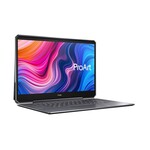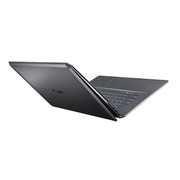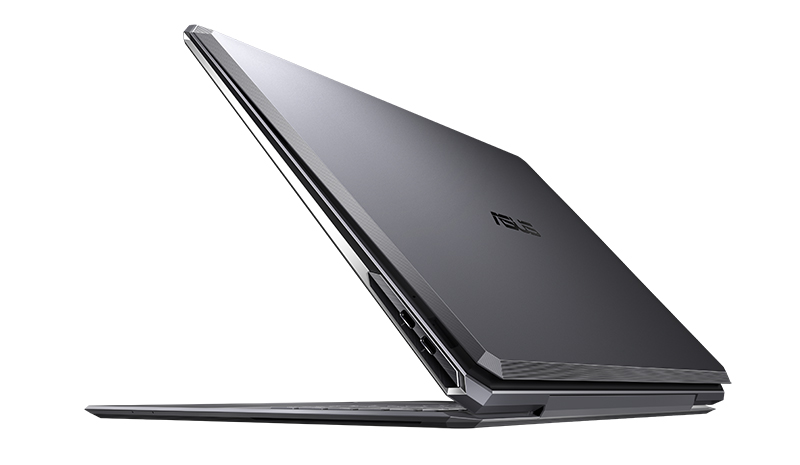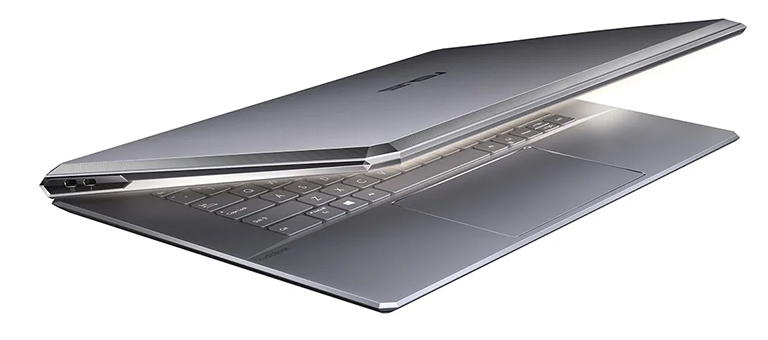Asus ProArt StudioBook One
Specifiche tecniche

Price comparison
Media dei 2 punteggi (dalle 6 recensioni)
recensioni per Asus ProArt StudioBook One
Sorgente: Hardware Zone
 EN→IT Archive.org version
EN→IT Archive.org versionThe world’s most powerful mobile workstation has landed in the office (well, my home to be more accurate because #WFH) – the ASUS ProArt StudioBook One (W590). It takes that bragging right by virtue of its NVIDIA Quadro RTX 6000 GPU, which boast a whopping 24GB of GDDR6 memory, and is intended to help bridge the gap between powerful, but bulky, desktop workstations and laptops. It also cost an face-melting S$18,688. Clearly, this notebook isn’t for the likes of you and I. Rather, the ProArt StudioBook series are built to cater to very specific needs of graphics professionals, digital artists, animators, and more. To provide these creators with a portable system with workstation-class power, enabling them to take advantage of it wherever they go.
Singola recensione, disponibile online, Corto, Data: 09/04/2020
Sorgente: Pokde
 EN→IT Archive.org version
EN→IT Archive.org versionWell, even by looking at the price, I guess most of us would understand that this isn’t a machine meant for us. Heck, I didn’t even know how to fully test out such a system. With what I have, I can see that the ASUS ProArt StudioBook One is truly quite an interesting machine. But overall I think that this machine is probably more of a concept design than a laptop that ASUS and NVIDIA expects to fly off shelves.
Singola recensione, disponibile online, Lunghissimo, Data: 08/26/2020
Valutazione: Punteggio totale: 76% prezzo: 69% prestazioni: 83% mobilità: 70% qualità di lavorazione: 75%
Sorgente: CNet
 EN→IT Archive.org version
EN→IT Archive.org versionAsus, the company that brought you the hinge with a lift, stands that idea on its head -- or really its lid -- for the ProArt StudioBook One. It's a high-ranking member of Asus' creator-focused laptop line, designed for professionals who need workstation graphics. The StudioBook One opens a gap behind the screen when you lift the lid, increasing the amount of cool air the fans can suck in from the bottom and sides without requiring big, unsightly vents.
Singola recensione, disponibile online, Lungo, Data: 08/11/2020
Valutazione: Punteggio totale: 80% prestazioni: 80% mobilità: 80% qualità di lavorazione: 80%
Sorgente: Tweakers
 NL→IT Archive.org version
NL→IT Archive.org versionSingola recensione, disponibile online, Corto, Data: 09/09/2019
Sorgente: The Gioididong
 VN→IT Archive.org version
VN→IT Archive.org versionPratico, disponibile online, Medio, Data: 06/06/2020
Sorgente: Nghenhin Vietnam
 VN→IT Archive.org version
VN→IT Archive.org versionSingola recensione, disponibile online, Lungo, Data: 06/04/2020
Commenti
NVIDIA Quadro RTX 6000 (Laptop):
Scheda grafica professionale per laptop di fascia alta basata sul chip TU102 con 4.608 shaders e 24 GB GDDR6 VRAM. Rispetto alla variante desktop, la GPU ha un clock inferiore. Nvidia afferma che un sistema desktop con RTX 6000 Ë circa il 13% pi˘ veloce in SpecViewPerf. A causa dell'elevato consumo energetico di 200 Watt, l'RTX 6000 Ë adatta solo per i grandi laptop con ottime soluzioni di raffreddamento.
Queste schede grafiche dovrebbero essere in grado di far funzionare tutti i giochi attuali con un framerates fluido ma rinunciando al livello di dettaglio massimo. Specialmente i giochi impegnativi come Crysis, Age of Conan, o Mass Effect sono utilizzabili soltanto con impostazioni grafiche ridotte. I giochi meno pesanti (e più datati), come Fifa 08, Command & Conquer 3, o Battlefield 2142 possono essere giocati con livello di dettagli più alto.
>> Ulteriori informazioni le potete trovare nel nostroConfronto delle schede grafiche e nella nostra Lista dei Benchmark.
i9-9980HK: Processore basato sull'architettura di Coffee Lake per computer portatili grandi e pesanti. Integra otto core di processore con clock a 2,4 - 5 GHz (4,2 GHz con 8 core) che supportano HyperThreading. Prodotto in un processore migliorato a 14nm (14nm++). Offre un moltiplicatore sbloccato che permette l'overclocking della CPU.
>>Ulteriori informazioni le potete trovare nel nostroConfronto dei processori per portatili.






